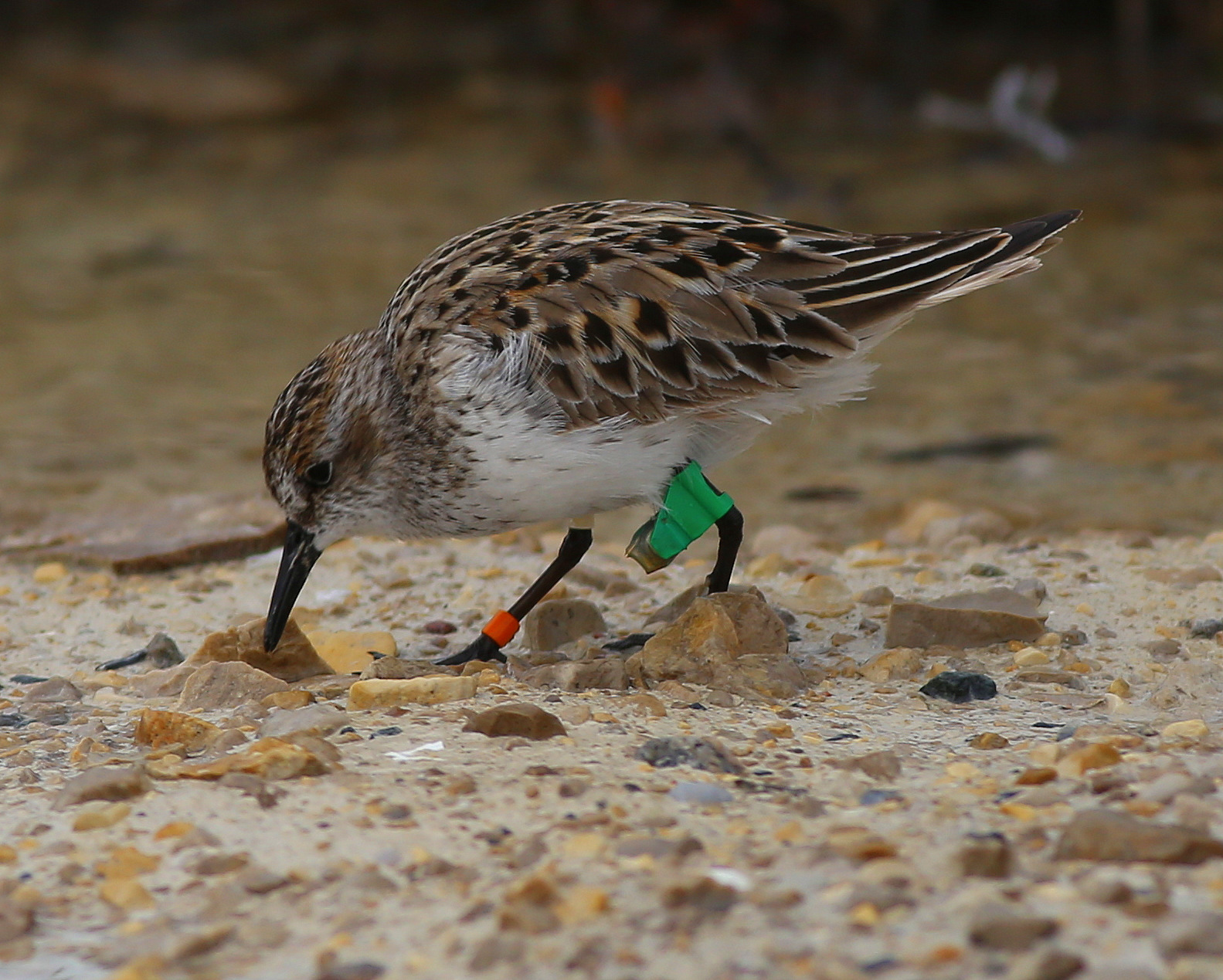Geolocators used to identify migration routes and stopover sites in the life of each bird
PLYMOUTH, MA April 5, 2017 – Understanding and managing migratory animal populations requires knowledge of all stages of their migration routes and their life cycle. Manomet, along with 18 partner organizations, embarked on the first large-scale analysis of migratory connectivity for Semipalmated Sandpipers among breeding, stopover, and nonbreeding sites. The results are contained in a new study published today by The Condor: Ornithological Applications.
The Semipalmated Sandpiper (Calidris pusilla) is a small shorebird, most commonly seen on migration along the coastlines of the eastern United States. It was historically one of the most widespread and numerous shorebird species in the Western Hemisphere, breeding across the North American Arctic tundra, but major population declines have been documented in the core of the nonbreeding range in northern South America. Breeding populations have also declined in the eastern North American Arctic, but appear to be stable or increasing in the central and western Arctic.
“To help understand what is causing the declines and work toward conservation of this species, Manomet and our partners set out to track migration routes and stopover sites using light-level geolocators, a technology which determines the bird’s position on earth by measuring the length and timing of daylight throughout the year,” said Stephen Brown, Vice President of Shorebird Conservation for Manomet and one of the lead authors of the study.
Beginning in 2013, researchers deployed 250 geolocators on adult sandpipers at sites across their breeding range in the North American Arctic. The results confirm that Semipalmated Sandpipers that breed in the eastern Arctic and use the Atlantic Flyway also use the areas in South America where population declines have been detected, suggesting that declines may be concentrated in populations along the Atlantic Flyway and in the eastern Arctic. These declines may be tied to hunting on the wintering grounds and habitat loss and degradation at stopovers along the Atlantic Flyway. Impacts are difficult to measure given the large number of potentially affected stopover sites.
Brown added “Our data provided new insights about how long sandpipers stay at migration stopover sites, which will be useful to studies that measure and monitor the total size of populations using these sites. Understanding the connections between breeding, migration, and wintering areas for these populations of a widespread yet declining shorebird will help us to identify the causes of declines and ensure the effectiveness of targeted conservation efforts.”
Partners included Environment and Climate Change Canada in Saskatoon, Yellowknife and Ottawa; Delaware Bay Shorebird Project; Kansas State University; New Jersey Audubon Society; Wildlife Conservation Society, Fairbanks, Alaska; University of Alaska Fairbanks; Arctic National Wildlife Refuge; Canada Research Chair in Polar and Boreal Ecology, Université de Moncton and Université du Quebec `a Rimouski; Department of Fish and Wildlife Conservation, Virginia Polytechnic Institute and State University. Additional partners include Centre for Wildlife Ecology, Simon Fraser University; Audubon Society of Portland, Oregon; U.S. Fish and Wildlife Service, Portland, Oregon; University of Alaska Anchorage; Surrey, British Columbia, Canada; U.S. Fish and Wildlife Service, Anchorage and the Commission for Environmental Cooperation.
Migratory connectivity of Semipalmated Sandpipers and implications for conservation will be available April 5, 2017, at http://americanornithologypubs.org/doi/full/10.1650/CONDOR-16-55.1 (issue URL http://americanornithologypubs.org/toc/cond/119/2).
About Manomet
Manomet is a nonprofit organization that believes people can live and work today in ways that will enable our world to thrive and prosper tomorrow. Manomet’s mission: applying science and engaging people to sustain our world. Visit www.manomet.org for more information.
About the journal
The Condor: Ornithological Applications is a peer-reviewed, international journal of ornithology. It began in 1899 as the journal of the Cooper Ornithological Club, a group of ornithologists in California that became the Cooper Ornithological Society, which merged with the American Ornithologists’ Union in 2016 to become the American Ornithological Society.





 Back to all
Back to all